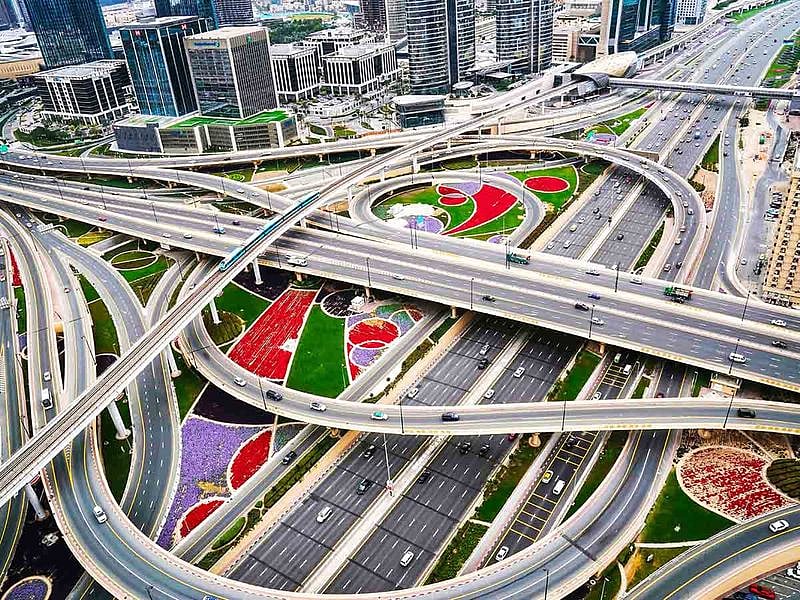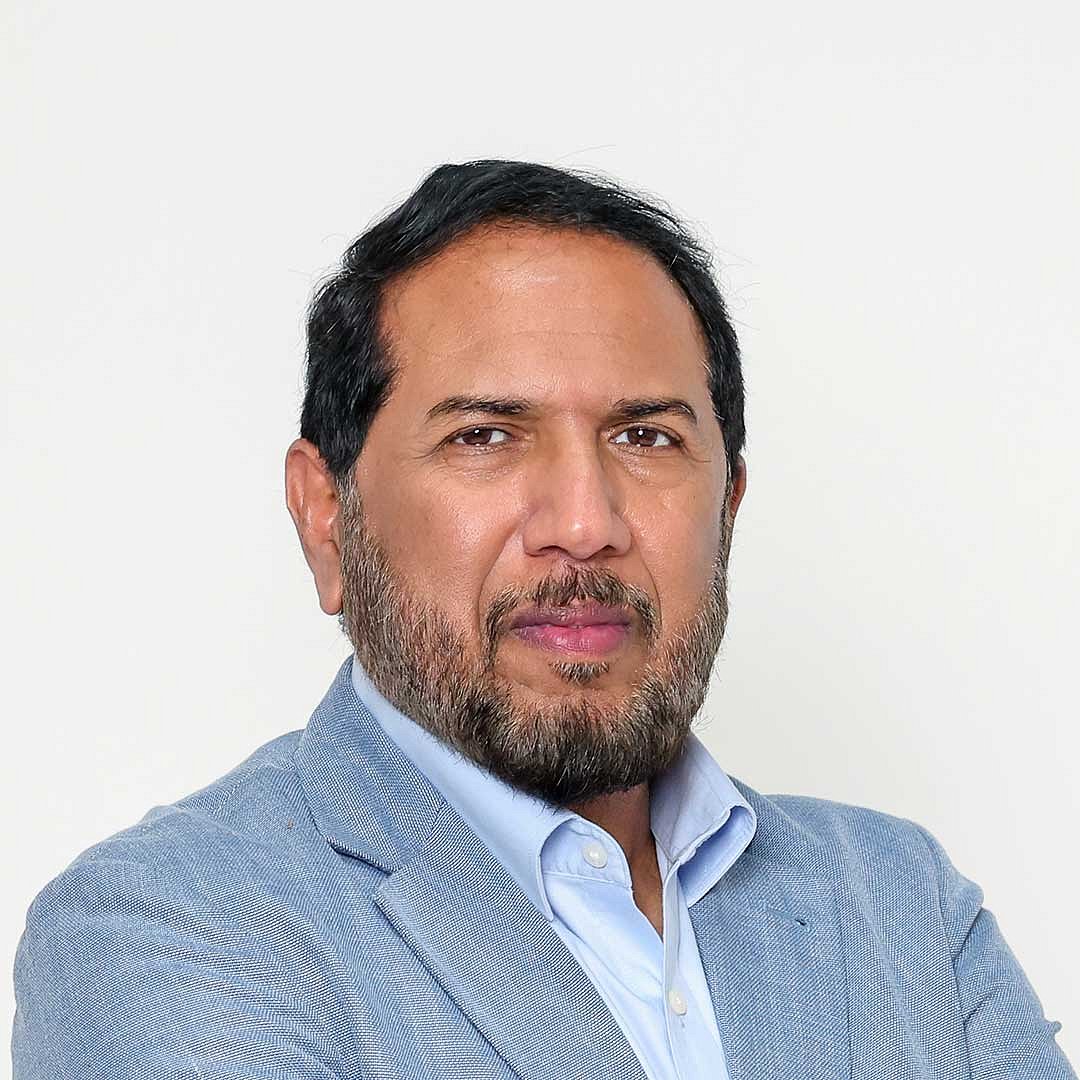From Metro to flying taxis: How RTA transforms urban living in Dubai
Dubai’s RTA has not only built roads, but it has also built the rhythm of a city

Dubai: When the Roads and Transport Authority (RTA) was created in 2005, Dubai was entering a critical stage in its evolution, a city of immense ambition, poised for global prominence but in need of infrastructure that could keep pace with its growth.
The challenge was monumental: to build not just roads, but a movement; to create a transport system that would connect people, places, and possibilities in ways few cities had ever achieved.
Two decades later, the results are visible in every direction. From the sleek curves of the Dubai Metro to the precision of its digital toll systems and the efficiency of its traffic networks, the RTA’s work has become synonymous with Dubai’s success story. What began as an effort to reduce traffic congestion has evolved into a masterclass in modern urban planning, one that has redefined how a city can move, live, and breathe.
A vision built on foresight
The transformation of Dubai’s transport landscape reflects a legacy of visionary leadership. Under the guidance of His Highness Sheikh Mohammed bin Rashid Al Maktoum, Vice President and Prime Minister of the UAE and Ruler of Dubai, the Emirate set out not only to expand its physical infrastructure but to build a future-ready city that could compete on a global scale. The RTA became the execution engine for that vision.
At its helm, Mattar Al Tayer, Director General and Chairman of the Board of Executive Directors of RTA, has led from the front, ensuring every project, from metro extensions to digital mobility platforms, aligns with Dubai’s broader economic and sustainability objectives. Under his leadership, the RTA has combined innovation, efficiency, and fiscal prudence to deliver projects that are as smart as they are transformative.
Infrastructure that shaped a lifestyle
The RTA’s work has gone far beyond asphalt and concrete. It has reshaped daily life. The Dubai Metro, the first in the Gulf region, has become one of the city’s defining features, seamlessly connecting key districts and serving millions each month. It has transformed how residents commute, where they live, and how they plan their day.
Roads, bridges, and tunnels built over the past two decades have not only reduced travel time but also strengthened Dubai’s connectivity with its neighbouring emirates. Intelligent transport systems, integrated tolling, and real-time traffic management now allow the city’s infrastructure to “think” — adjusting dynamically to manage flow and ensure safety.
Travel time index
The impact of this transformation is tangible. Traffic fatalities have dropped dramatically since 2007, while average travel times have improved significantly compared to major world capitals. Commuters spend less time on the road, and the city’s air is cleaner thanks to reduced fuel use and emissions. Dubai’s Travel Time Index, a benchmark for congestion, now outperforms cities such as Berlin and Sydney, demonstrating that effective planning can deliver both efficiency and quality of life.
A shift in mobility culture
Perhaps one of RTA’s most remarkable achievements has been changing the culture of movement itself. Two decades ago, public transport was an afterthought; today, it is a preferred choice for millions. The seamless integration of metro, tram, buses, and marine transport has created a system that is both reliable and inclusive, accessible to everyone, from office commuters to tourists and labourers.
This shift reflects more than convenience; it marks a cultural and environmental awakening. With cycling tracks, electric taxis, and ongoing investments in clean mobility, RTA has positioned Dubai as a model for sustainable urban transport. The emirate’s long-term strategy of achieving zero-emission public transport by 2050 is well underway, with hybrid and electric fleets already part of daily operations.
And the future looks even more dynamic. Autonomous vehicles, air taxis, and AI-managed roads are no longer science fiction. They are next on the RTA’s horizon, ready to take Dubai into a new era of intelligent, connected, and sustainable mobility.
The economics of movement
An independent study by McKinsey & Company highlighted the remarkable economic returns of RTA’s two decades of work. The authority’s projects have saved Dh319 billion in fuel and travel time, contributed Dh156 billion to Dubai’s GDP, and boosted property values by Dh158 billion. Foreign investment in the transport sector reached Dh32.4 billion, solidifying Dubai’s status as a global hub.
RTA’s infrastructure investments have achieved an internal rate of return of 4–5%, a world-class benchmark for public transport authorities. The city has delivered exceptional cost efficiency in building highways and metro lines, outperforming peer cities such as Moscow and Shenzhen by 1.5 to 2.5 times. Notably, constructing one kilometre of the Dubai Metro costs 36% less than in London and 55% less than in Sydney, a testament to Dubai’s ability to combine ambition with strategic efficiency.
Building minds, not just roads
While the infrastructure is world-class, RTA’s greatest long-term investment may be in human capital. The authority has cultivated a generation of Emirati engineers, planners, and innovators working on projects that rival any in the world. These young professionals are designing the algorithms that manage traffic flow, developing AI-based safety systems, and envisioning the next phase of autonomous transport.
This emphasis on talent and technology ensures Dubai’s mobility strategy remains agile and forward-looking. It also cements the city’s reputation as a living laboratory for the future of urban transport, a place where ideas move as fast as the trains that carry them.
A future built on integration
As Dubai enters its next phase of growth, the RTA’s focus will continue to evolve. The authority’s upcoming initiatives centre on integrating artificial intelligence into infrastructure management, supporting start-ups in the mobility sector, and strengthening global partnerships to import and export best practices.
But the underlying philosophy remains constant: transport is not just about getting from one point to another, it is about enabling life, opportunity, and connection.
More than a transport network
Every city tells its story through its streets. Dubai’s story, written in steel, glass, and innovation, is one of foresight and determination. The RTA has not only built roads; it has built confidence. It has reimagined what an efficient, people-centric city looks like.
In just twenty years, Dubai’s transport authority has turned vision into velocity, transforming daily routines into a model of modern living. As flying taxis prepare to take to the skies and smart mobility becomes the norm, one thing is certain: the journey that began with a single metro line has evolved into a movement, one that continues to propel Dubai forward, faster, smarter, and stronger than ever before.
Sign up for the Daily Briefing
Get the latest news and updates straight to your inbox
Network Links
GN StoreDownload our app
© Al Nisr Publishing LLC 2025. All rights reserved.
